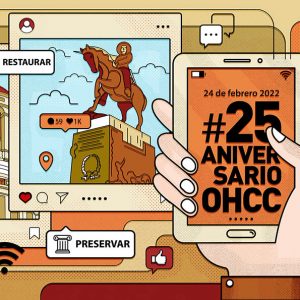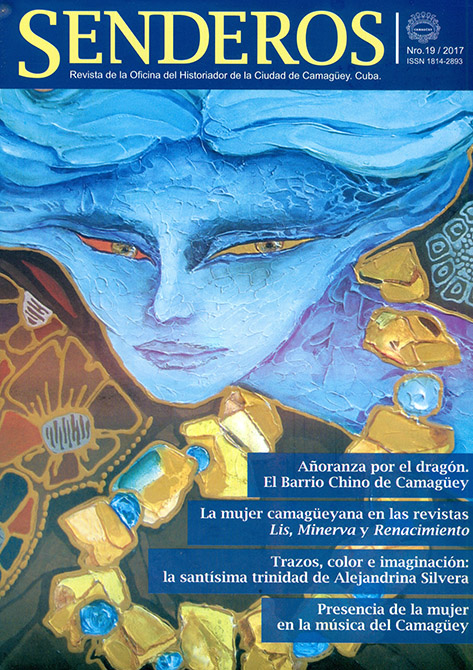Ana Betancourt was the wife of Ignacio Mora de la Pera. The two united with the same passion for the homeland.
The woman from Camaguey had relatives who, from the first decades of the 19th century, conspired for Cuban emancipation. One of these was Gaspar Alonso del Castillo y Betancourt, who was an active member of the secret non-Masonic conspiracy Liga la Cadena or Cadena Triangular de Puerto Principe, which emerged in 1821, mainly a place that advocated the Bolivarian option. Through that side, other members of said patriotic group would be part of his family, as well as through the Agramonte side, especially, with his cousin Ignacio Agramonte y Loynaz.
When the time has come to decide whether to continue doing housework, either in the family home located on Comercio Street no. 17, or in the one of Mayor no. 24 that faced the one of San Isidro, in the district of the Major Parochial, or to leave with her husband to the insurrectionary battle field; she would decide to join the Ten Years War.
Once the national liberation process had begun in Camagüey, on November 4th, 1868, days later, on December 4th, Ana Betancourt would be forced by circumstances to leave the comforts of home to go to La Matilde de Simoni estate, where she would meet Major Ignacio Agramonte’s wife and other relatives.
Here she participated in the receiving of arms, clothes, newspapers, war supplies and medicines destined for the insurgents of Camagüey; work that she carried out in the company of Francisco Sánchez, Ramón Rojas Aguilar, Francisco Arredondo y Miranda, Miguel Guerra y Betancourt and other patriots. Here she met informants and secret agents that carried out risky missions. Also, together with Loreto del Castillo and Varona, Amalia Simoni Argilagos, Concha Agramonte Boza and courageous women of the city, she gave decisive support to the Revolution.
And what a great initiative this woman had in the Assembly of Representatives of the Revolution held in Guáimaro, on Saturday, April 10th, 1869. Along with other ladies of the Camaguey creole patriciate, she had a decisive performance in the political and material support offered to the assembly members.
Two days after the inauguration of the position of President of Carlos Manuel de Céspedes y del Castillo and of the General in Chief of the Liberation Army Manuel de Quesada y Loynaz, that is, what would have happened on April 11th, -in a spacious house made of bricks, wood and tiles offered to Céspedes by the patriot José María García-, Ana de Betancourt on Wednesday, April 14th, in a nightly public meeting in Marte Square a few meters from the portico of the church that overlooked Polo Ártico Street, and Príncipe Street (current Central Highway), by the way, the one where the solemn opening session of the convention would have been held (almost on the corner of General Manzano or La Libertad), she addressed briefly to those gathered there, words to underline that with the revolution the time had come to emancipate women.
Her words
Those were her only and forceful words that would have followed those of the talented Dr. Adolfo de Varona, alluding to rights and freedoms and other important matters, for the knowledge of those summoned under the portals of those houses adorned with flower hangings, Cuban flags and other ornaments.
The Constituent Assembly, already placed in Las Damas Street, between La Libertad and La Bandera Street, had ended its deliberations on the 12th. Those were hours of intense independence fervor, both by the representatives of each of the regions in struggle there represented by Camagüey people.
We are sure, Ana Betancourt would have preferred to occupy a seat among the representatives, some wearing their campaign uniforms while others in legal suits; she as a protagonist legislator and not a witness of the nascent Republic of Cuba in Arms and its revolutionary constitution.
Manuel Sanguily y Garrite, witness to the events, would refer to that special event in which the singular patriot of Camagüey uttered those words from her gut: “A very distinguished lady climbed, naturally helped by some gentlemen, to the plataform, which was a table ; but she did not spend much time, because she soon forgot her speech: the audience was nevertheless gallant and applauded ”.
Ana from Martí
José Martí also does not stop citing her in his article “On April 10th”, when he pointed out her physical presence at a meeting held on the night of that day, by the way, which highlights that Ana had gone up to “a table”, although Martí mistaken the exact date of the meeting, referring to the fact that it took place on the 9th, when it was actually Wednesday the 14th.
Perhaps the Master’s error was due to the fact that on the 9th was when Ana Betancourt had to consult everything with her husband, the patriot Ignacio Mora, to decide to write a petition to the House of Representatives, which should be read on the 12th. Her testimony specifies: “ Two days later, encouraged by Ignacio [Mora de la Pera, her husband], Moralitos (the delegate for Havana and teacher Vidal Morales y Morales) and Zambrana (secretary of the Chamber, the Lic. Antonio de Jesús Zambrana y Vázquez from Havana) submit a petition to the Chamber that would be read by Agramonte (Camagüey secretary Lic. Ignacio Agramonte y Loynaz). In it, she asked the Cuban legislators that as soon as the Republic was established, they grant us women the rights of which we were entitled in justice”.
However, the petition read by the chamber secretary, Lic. Ignacio Agramonte, was never approved by the assembly members, as can be recognized in the text of the historic Guáimaro statement, from 1869, simply because, due to her condition as a woman, that right was not yet recognized by most of the Cuban macho society of the mid-nineteenth century.
From Camagüey women who follow her
The researcher Olga García Yero affirms that “If this is so, and everything seems to indicate it because it is Ana’s own testimony, a fact was, apparently, her interrupted intervention before the public of a meeting outside the assembly space and another very different from the request that Agramonte received in writing and read to the legislators. At the meeting, according to her own account, she could hardly be heard. In the Assembly, her petition was read by a man, whose high human political statue was not heard by the very patriarchal conscience of those who wrote the first of the most important milestones in the constitutional history of Cuba. ”
To help her get off the table that night, Céspedes, showing off her exquisite chivalry, would extend his friendly hand, which was also of her husband and journalist Ignacio Mora. He also gave Ana a hug because of her words.
Years later, in 1894, prior to the War of Independence of 1895, it seems that Gonzalo de Quesada y Aróstegui would conveniently include in his biography of Ignacio Mora the testimony of the worthy patriot of Camagüey, who, according to Dr. García Yero , “It cannot be denied that the text itself has a gallantry, an open-mindedness and a concise, but exact perception of the situation of women. These qualities make it, until today, one of the most brilliant documents about Cuban women ”.
It is worth mentioning that Ana Betancourt would offer another version of her words at that meeting in the Marte Square of Guáimaro. To her nephew Gonzalo de Quesada, from Madrid, on June 17th, 1892, she said, among other things: “That the Cuban woman waited patiently and resignedly for that beautiful hour when a new revolution would break her yoke and untie her wings. And that just as they, to destroy the slavery of the cradle, they had sworn to fight to the death, they should free women too”.
Different versions, the greater meaning it had was the altruism demonstrated by that woman from Camaguey in breaking with the Cuban patriarchal society of the middle of the century; and for placing in a popular context an approach that henceforth supposed to make giving oppinions and one’s own transparent and democratic criteria as the maximum expression of freedom of speech until then achievable in a part of the territory of free Cuba, despite the conquest of participatory democracy that would move to higher levels only with the full triumph of the Cuban Revolution, on January 1st, 1959.
Translated by: Aileen Álvarez García






